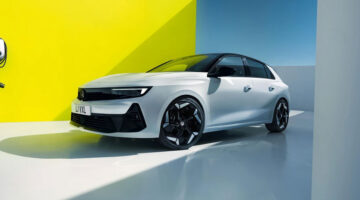Switching to the driver’s seat though brings an immediate difference. With room to manoeuvre, I can now concentrate on enjoying the ride, which is actually pretty smooth. The design inside is just as striking as it is on the outside, with door handles replaced by two switches marked ‘open’, glass viewing panels dotted here and there, and beautifully stitched leather upholstery. Leaving the wooden trim unvarnished for environmental concerns is perhaps going a bit far, but all in all it’s a decisive tick in the box.
I’m keen to make the most of my fifteen minutes, and switch the dual powertrain to ‘Stealth’ mode by way of a silver paddle shift on the steering wheel. As well as pleasing my inner eight-year-old by using the coolest drivetrain name ever, this option also means that battery power alone is running the Karma. The four-door saloon is capable of hitting 125kph using its electric powertrain, but in a clever function by Fisker, power automatically transfers back to the four-cylinder engine when the batteries hit 15% of charge.
Power delivery is not quite as stealth fighter-esque as I’d hoped: fast yes, but thanks in part to the overall weight of the car, still lacking some fireworks. Even when we switch to Sport mode, the newfound noise from the side-facing exhaust valves doesn’t really increase the drama, the DVT powertrain making the engine sound a little strained even if the rate that the speedometer needle shoots up begs to differ.
It’s the steering though where the Karma really comes into its own. Good heft and solid feel for the front wheels, the electric four-seater could even be called playful on the straight-line Dubai highways. The brakes are a little stiff but there’s no doubting their punch as several times my forehead hurtles rapidly towards the windscreen as an emirate taxi changes lanes at the last possible second.



